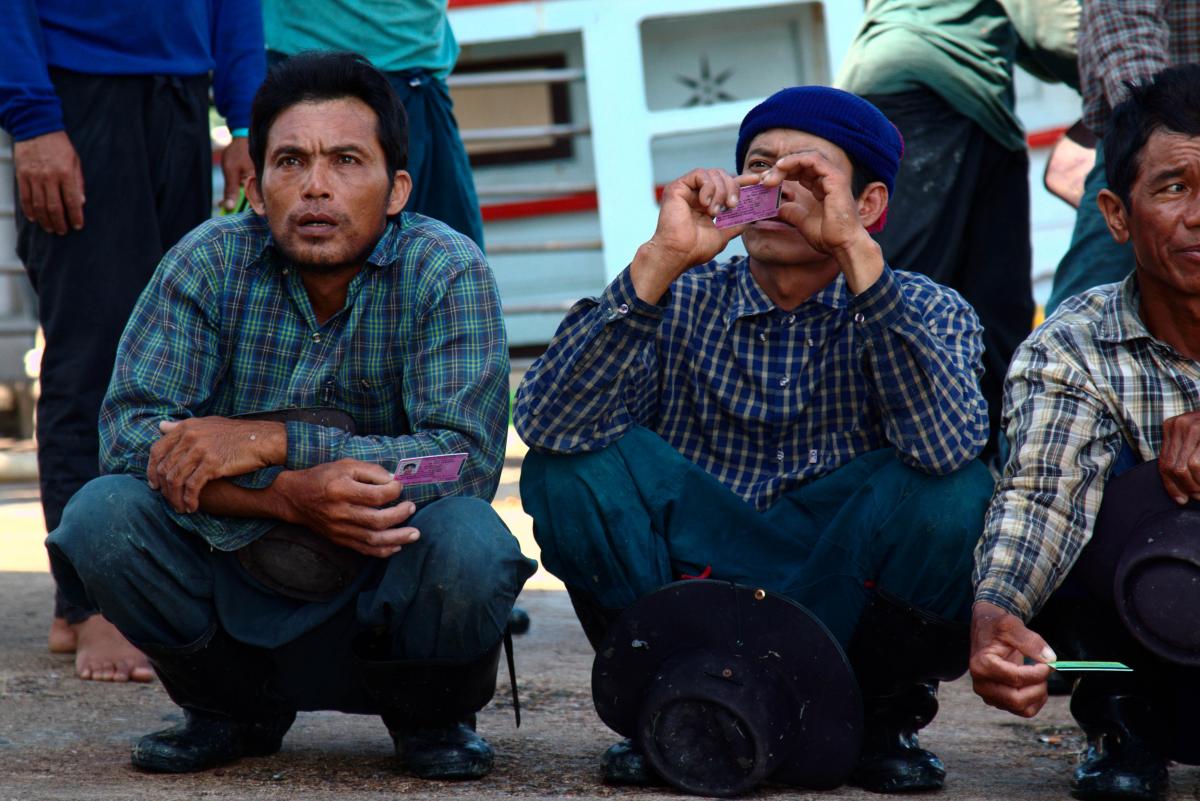The United States is a world leader in social and environmental sustainability. Fishermen know U.S. fisheries operate under a suite of laws, regulations, policies and best practices that champion freedom of choice, fishing families, and also protect fishermen from abusive, unsafe, or unfair labor practices. However, new concerns in the marketplace related to social responsibility onboard commercial fishing vessels followed the Associated Press investigation that found egregious labor practices (including child and forced labor) on foreign fishing vessels.

This story was first published in the April issue of National Fisherman. Subscribe today for digital and print access.
Global efforts to eradicate the use of forced or child labor are rising to the demands of customers who demand credible documentation of socially responsible practices throughout the seafood supply chain. Commercial fishing vessels are of particular concern because of their isolation at sea and the violations found on foreign vessels. Fishery certification programs are under pressure to include labor criteria in existing sustainability standards. However, using a one size-fits-all approach to solve this global issue ironically could harm U.S. commercial fishermen, especially the small-boat fleets and fishing families. Hence, U.S. fishermen need tools to credibly demonstrate to the world that they operate in a socially responsible manner.
In an effort to maintain global market access for seafood, individual fishing fleets are assessing and documenting their labor practices. This information can then be provided to customers as validation of the low-risk of forced or child labor in these fleets. The Alaska Fisheries Development Foundation and the United Fishermen of Alaska have taken the initiative to document the socially responsible practices onboard commercial fishing vessels in Alaska through a project that is designed to be replicable by other regions. The information below is a sample of that work.
The Alaska seafood industry represents more than half of the commercial fishing landings in the country and is harvested exclusively by U.S.-flagged vessels that are permitted and registered under U.S. federal or state of Alaska authorities.
In 2017, more than 9,000 commercial fishing vessels were licensed to operate in Alaska. More than 8,500 (or 93 percent) of these vessels were under 59 feet in length, had crews of five people or fewer, and regularly returned to port within 10 days. The U.S. Coast Guard is the primary enforcement agency for commercial fishing vessel safety and conducts thousands of vessel safety inspections each year.
The Alaska commercial fishing industry is largely in compliance with the Coast Guard’s robust safety and vessel standards. For instance, from 2014 to 2018, the Coast Guard conducted 2,168 involuntary at-sea inspections of commercial fishing vessels in state and federal waters off Alaska for compliance of all safety and fisheries regulations, and documented a 91.9 percent compliance rate. During this same period, the Coast Guard conducted more than 9,000 dockside safety inspections of commercial fishing vessels operating in state and federal waters off Alaska. More than 80 percent (7,279) of these voluntary and involuntary exams were 100 percent compliant with Coast Guard safety requirements.
Parallel to other U.S. fleets, the majority of the fishing fleet in Alaska consists of small vessels that are often owned and operated by fishing families raising children onboard, where they learn impressive life skills that transfer to success in other areas of their lives. These families are the fabric of the industry and coastal communities. However, these fishing families often do not fit the traditional mold for labor practices, and they are at the highest risk of harm from the unintended consequences of international certification standards for labor practices.
Transparency, including frequent opportunity for third-eye witness to vessel practices and clarity of jurisdiction in fisheries off Alaska, promote responsible practices onboard. Comprehensive federal and state laws and regulations, cooperatively enforced, in combination with insurance requirements and common industry practices, create a fair and safe working environment for commercial fishermen in Alaska and ensure an extremely low risk of egregious labor practices.
This project provides a regional approach to addressing this global issue in a way that works for the local fishing industry and seafood consumers. The project results inform certification programs and risk assessments related to labor practices in U.S. commercial fishing fleets.
Seafood producers can use this information to maintain global market access and seafood sales. The documents completed can also be used as a template for other U.S. fisheries to conduct regional fleet assessments in order to demonstrate socially responsible practices and maintain market access for all U.S.-harvested seafood. Access “Social Responsibility on Commercial Fishing Vessels in Alaska” at www.afdf.org. We will also present the project findings at Seafood Expo North America on March 17.







